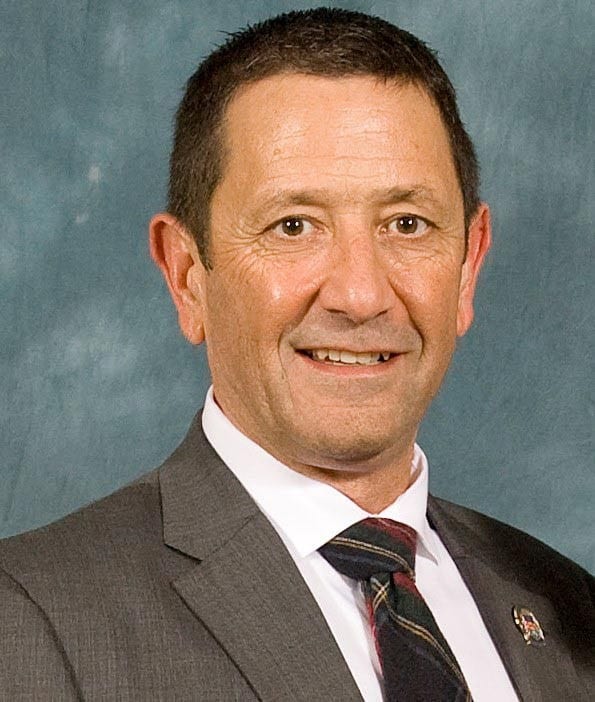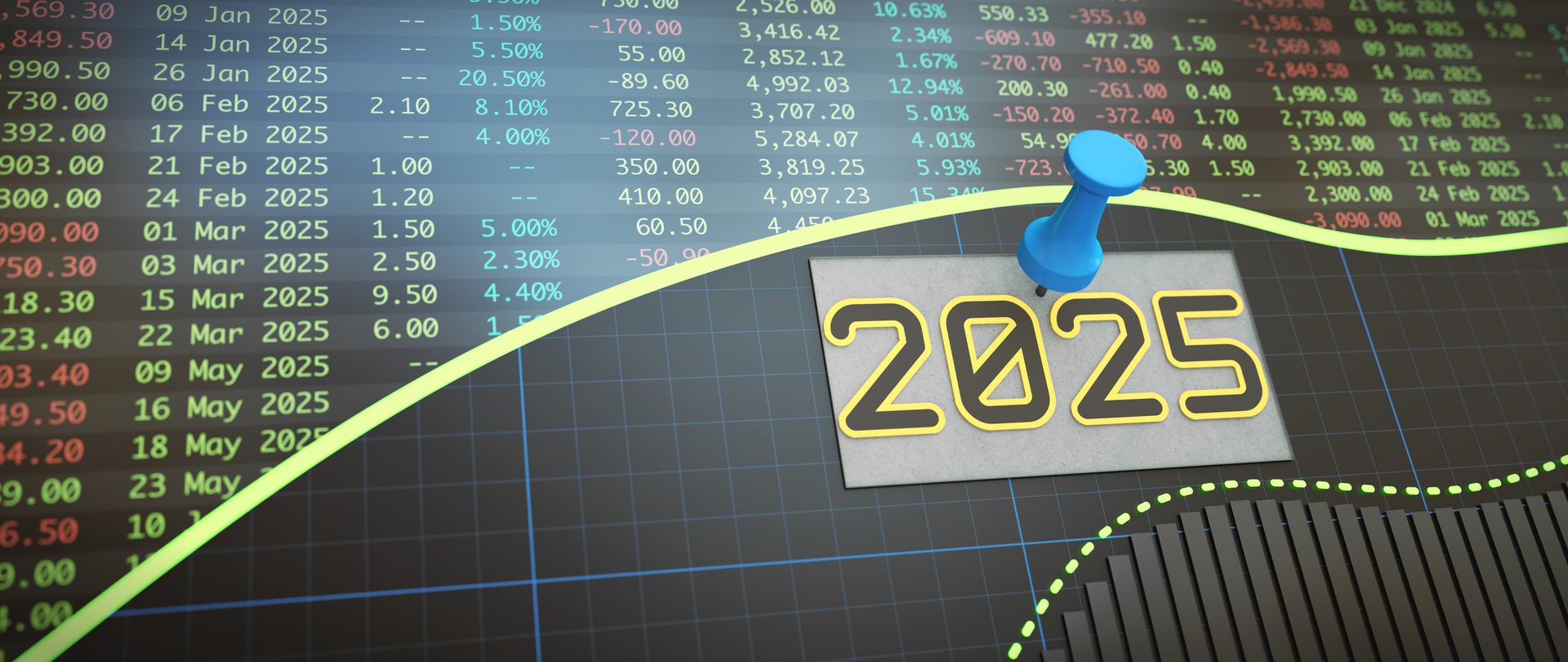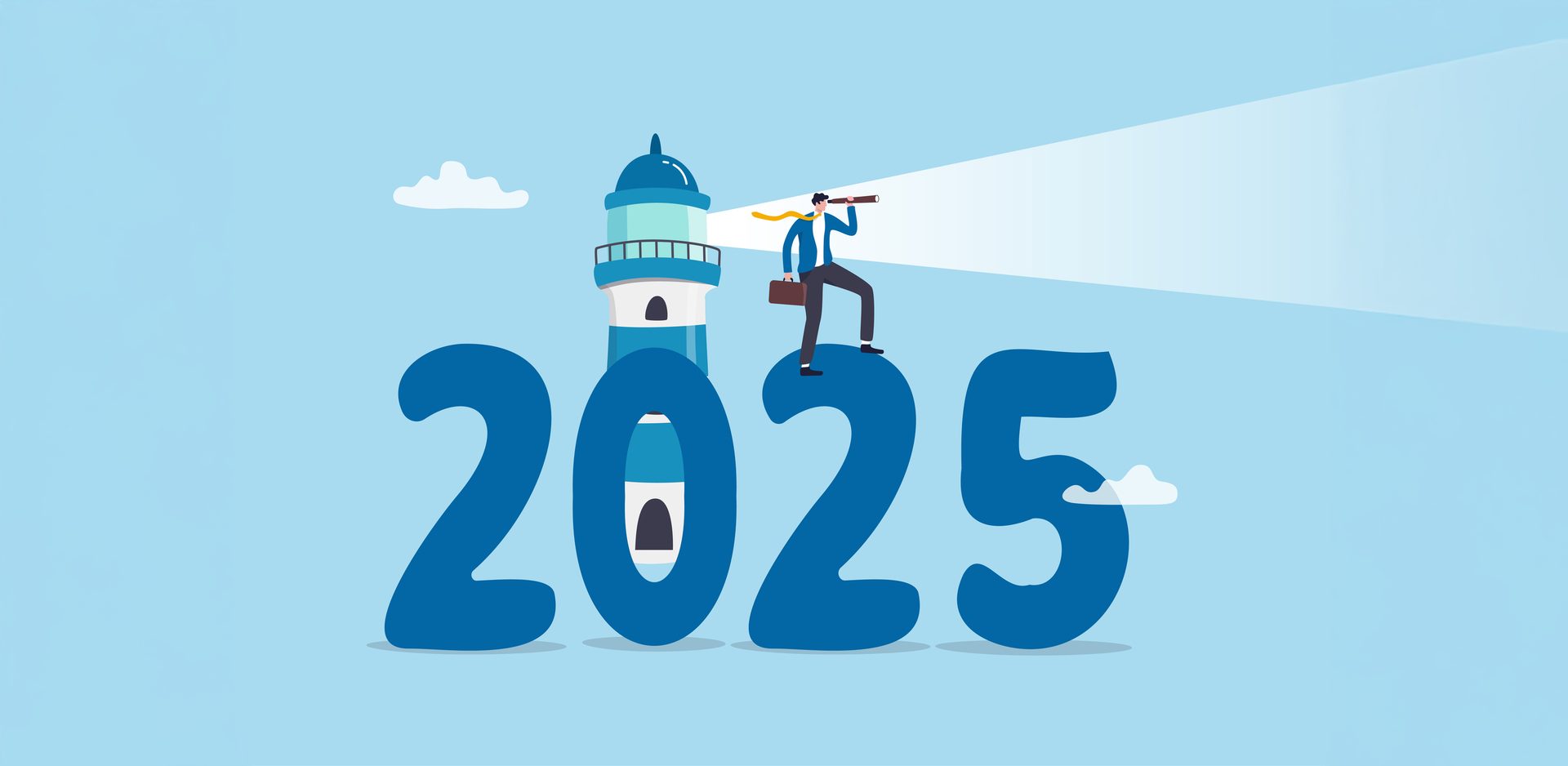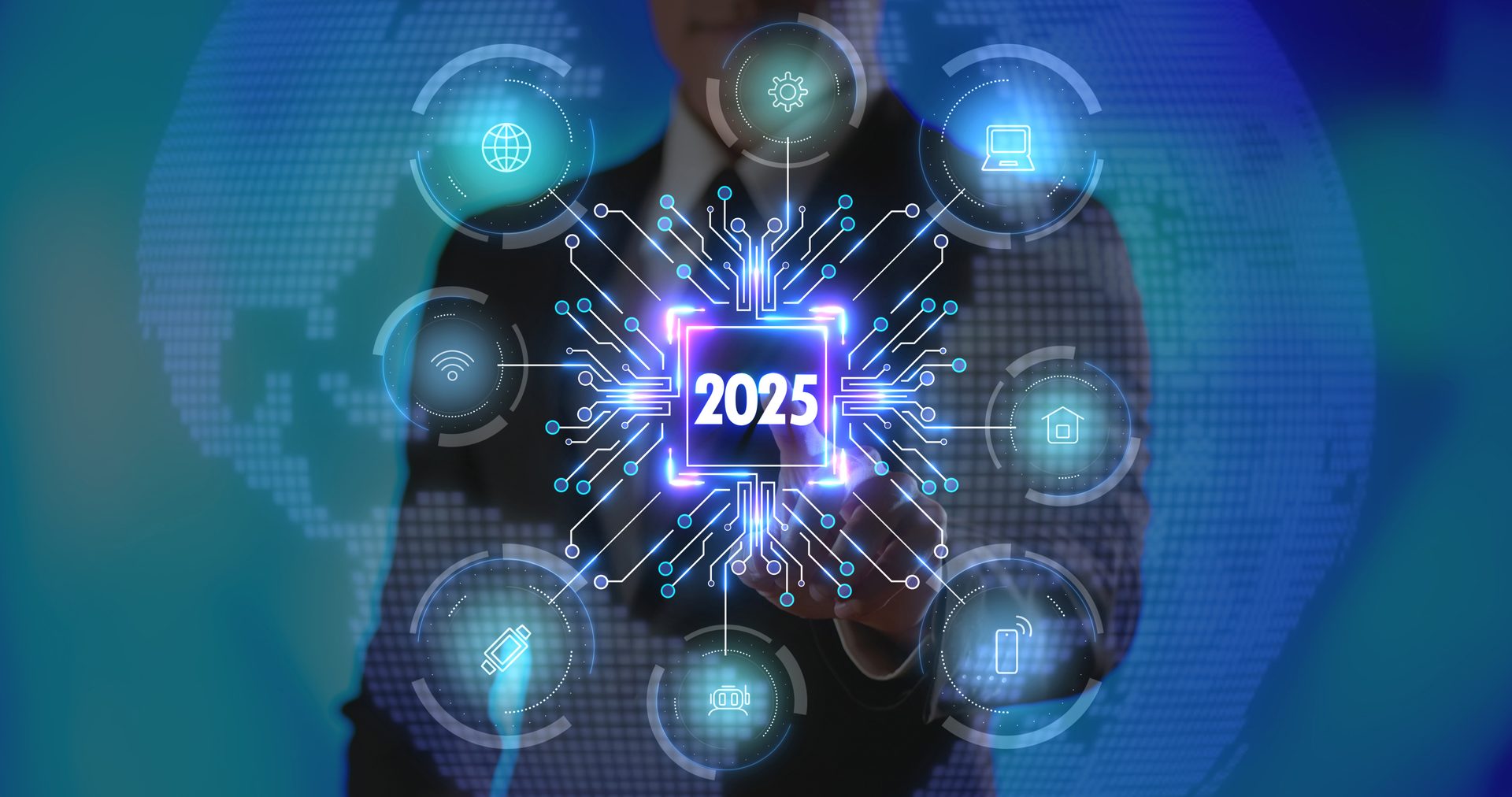SDM exclusive // 2025 Industry Forecast
A Year of Optimism
Looking ahead, the majority of dealers and integrators are optimistic that 2025 will be a good year for the security industry.
By Karyn Hodgson, SDM Editor-in-Chief
Arkadiusz Warguła / Creatas Video+ / Getty Images Plus via Getty Images
Both the 2025 SDM Industry Forecast Study (published annually since 1982), and an industry panel made up of three security dealer and integrator companies of varying sizes and geographic locations, agree that the outlook for the coming year seems positive. After several years of upheaval between the pandemic, supply chain issues, economic uncertainty and inflation, security companies have found their footing and are excited for the new technology and service opportunities they can offer their customers.
Respondents to this year’s Industry Forecast, published in January but conducted in November 2024, are definitely more optimistic about 2025 than they were this time last year, with more than 2/3rds (70 percent) expecting their company revenue to increase over 2024 — last year just 58 percent of respondents said the same.
Looking at what actually happened versus their predictions, respondents were right to be more cautious last year, with exactly half of them reporting an actual increase from 2023 to 2024. Of those predicting revenues would stay the same, 35 percent predicted it and 40 percent experienced it. Those whose revenues went down were three percentage points higher than anticipated (10 percent total).
However, according to this year’s panelists, whether 2024 was good or just average, the expectation is things are looking up for 2025. With the election behind us — and a new administration coming in — the rise of AI and increased as-a-service offerings, and solid customer interest in these and other solutions, panelists are confident they are on the right track, and in the right industry, at the right time.
Greg Parker is a business leader with over 25 years of experience in product management, strategic planning, service portfolio management, channel excellence, and engineering. Parker joined Johnson Controls in 2020 and currently serves as global vice president, security and fire, life cycle management.
Prior to Johnson Controls, Parker was at Trane Technologies as portfolio director for building services. Image courtesy of Johnson Controls

Chuck Petrusha, the 2022 George A. Weinstock Award Recipient, is a long-time industry veteran and successful alarm company owner who has provided leadership and service to the alarm, electronic security, and fire alarm industries. He is currently the president and CEO of Advanced Security Systems, ranked No. 58 on the 2024 SDM 100 and SDM’s 2021 Dealer of the Year. Serving Northern California and Southern Oregon since 1971, Advanced Security Systems is a full-service alarm company for both residential and commercial customers.
Petrusha has been an active participant, holding various leadership roles in several industry associations and organizations including the California Alarm Association (past president and sargent of arms), California Automatic Fire Alarm Association, WBFAA Apprenticeship Program, and the Electronic Security Association (ESA), among other industry organizations. Petrusha was also the founding president of the Redwood Alarm Association, a chartered chapter of the CAA. Image courtesy of Advanced Security Systems

Kathleen Ford is co-owner and CEO of ScDataCom, a nationally recognized security integration company providing physical and electronic security solutions to commercial clients in the Southeast, and to public sector clients throughout the U.S. Ford has overseen ScDataCom’s explosive growth, achieving recognition on the Inc. 5000 list for 2022, 2023, and 2024 and recognition on the Vet100 (100 Fastest Growing Veteran Owned Companies in America) in 2024.
Prior to joining scDataCom in 2014, Ford spent almost three decades in the U.S. Army Nurse Corps, retiring in the rank of colonel. She holds an electrical (low voltage) contractors license in both Florida and Georgia. She has a Bachelor of Science degree in Nursing from University of New Hampshire, Master of Science in Nursing from the Medical College of GA, and a Master of Strategic Studies from the U.S. Army War College. Image courtesy of ScDataCom

The SDM Industry Forecast Panel: 2025
Our service business grew 8 percent in fiscal year 2024 and orders were up 10 percent for service. That indicates a continued growth and this is a very important and strategic part of our business.
— Greg Parker, Johnson Controls
The number of respondents to SDM’s Industry Forecast Study expecting revenue growth in 2025 rose sharply, by 12 percentage points over last year. Those expecting revenues to stay the same declined accordingly, by 9 percentage points, and those expecting a decrease declined by 2 percentage points. Among those anticipating an increase, the expected mean increase is 15 percent, down 1 percentage point from last year’s mean of 16 percent.
A Pretty Good 2024
“We’re a security dealer here in Northern California and basically our geographic footprint is from the golden Gate Up through Central Oregon and focused mainly on the West Coast,” says Chuck Petrusha, president and CEO of Advanced Security Systems, Eureka, Calif. “Last year our gross revenues were just over $10 million, which was about a 5 percent increase over 2022. If all goes well through 2024, we are going to show about a 7 percent increase in our top line gross revenues and almost equally in our monitoring.”
Petrusha continues, “The attritions have been tough for us the last few years and so just maintaining our monitoring income at that level has been a challenge. But we’ve been able to not only maintain but also grow it, so we’re very proud of that. And we’re looking at 2025 as a good year and we expect the economic forecast to change slightly in California and hopefully tick up a couple notches.”
Kathleen Ford, CEO and co-owner, scDataCom, a Savannah, Ga.-based integrator specializing in the government sector, says she is actually trying to slow her company’s growth down a bit. “About 75 percent of our business comes out of the federal sector, so … we’re trying to remain small. There are some advantages in the federal sector to remaining small, although we’re approaching that threshold pretty quickly. Our year-over-year growth from 2022 to 2023 was about 112 percent and our growth from 2023 to 2024 was another 52 percent. So I think we’re going to slow down a little deliberately between 2024 and 2025, but we’re still looking at probably a 23 percent or so growth projected for next year.”
The third panelist, Greg Parker, global vice president, security and fire, life cycle management, for Johnson Controls’ integration side, Glendale, Wis., says his company is primarily focused on the smart building market. “We’re really focused on healthy, safe, sustainable buildings, and smart building innovation,” he says. “In terms of revenues and bookings, we grew 4 percent organically in fiscal year 2024. However, in Q4 we had 10 percent sales growth.
“If I break that down one level further, our service business grew 8 percent in fiscal year 2024 and orders were up 10 percent for service,” Parker continues. “That indicates a continued growth and this is a very important and strategic part of our business. And then one more layer down for fire and security … we expect those businesses to grow low single digits in fiscal year 2024 because our indications are the new construction market was a bit softer throughout the year.”
Video surveillance remained the top market segment for producing sales in 2024, staying steady at an average of 3.8 out of 5, the same as the last three years. Following video surveillance was access control, then fire alarm/emergency communications. However, looking beyond the mean numbers at the percentage of those describing these markets as “very good or excellent,” the biggest winners were video analytics/artificial intelligence (up 10 percentage points) and access control systems (up 9 percentage points). Intrusion Alarm was down 3 percentage points and monitoring was down 5 percentage points. All other categories were up from the previous year.
The Panel Talks RMR

matejmo / iStock / Getty Images Plus via Getty Images
SDM: How did your company’s 2024 recurring monthly revenue (RMR) change compared with 2023? And how do you expect 2025 RMR will change compared with 2024?
Chuck Petrusha: We are focusing not only on our RMR but looking inside of our RMR or attrition at exactly why folks are cancelling. So there’s no real new trend that I can report on cancellations, but I can say from our company’s point of view, residentially, the new business has slowed from what it was even three years ago. We don’t feel that it’s pressure from the DIY companies near as much as we just see a slowdown in housing and new housing starts. But multi-family housing is no problem. We’re very, very busy and our RMR trends there are growing at a rapid pace. Commercially the same thing, growing rapidly.
Overall, from 2023 to 2024 we’re going to show single digit growth on our RMR, which we feel satisfied with, even though we’d like to get in that 10 percent plus growth for RMR. In 2023 it was about 7 or 8 percent. We are right in there and we see the same thing panning out for 2024 and are optimistic for 2025 to be about the same. But one thing that has offered the alarm dealer an opportunity is the threat of of AT&T sunsetting their phone lines in California, maybe nationally. So we have a new effort to contact our existing customers and most of those that we’ve contacted are switching from our lowest form of monitoring rate, which is out of a telephone line, to either a cell or Wi-Fi or a redundant Wi-Fi cell combination. So there has been some growth from inside of our existing customer base.
Kathleen Ford: We set a goal in 2024 to grow and it looks like we’re going to end with about 10 percent of our revenue coming from RMR for 2024 and we have a rather ambitious goal of bringing that up to 15 percent in 2025, if possible. Our RMR does perhaps look a little different than Chuck’s, but, what we’re finding is a trend in the public sector, particularly the Department of Veteran’s Affairs, where they are seeking five-year contracts for embedded technicians or full-time service and maintenance contracts to manage their systems. It’s great for me, of course, but it’s great for the customer as well because they get everything they need on their system rather than an install-and-forget-it kind of thing until they’re ready to replace it when the technology is obsolete. So that’s encouraging and I’m hoping to land a few more of those recurring contracts for 2025 and hit that 15 percent.
While this potentially looks a little different than what the industry usually considers managed services, a lot of that is because in the public sector, they’re largely on-prem systems, so they are not cloud-based. That’s what is so exciting for me to see these contracts out there, because for some years we’ve been stuck in this “go to managed services” push in the industry with a customer base that’s very reluctant to do so. So now they’re finding a way to do it. We’re actually on-premise doing work, but they’re prepaying for that, so we are finding that to be a successful arrangement for us, and I think truly the customers are highly satisfied with the results they get.
Greg Parker: We grew services or RMR roughly 8 percent in 2024 and orders are up 10 percent in that effort. We have a high degree of focus on recurring revenue. The first thing I thought of when you asked this question was actually related to what Kathleen just said but in a slightly different way: managed services. Yes, we see opportunities potentially with embedded technicians depending on the vertical market that we serve. However, I think that our bigger opportunities are with a bit of a hybrid managed services where, if you take, for example, our Open Blue connected security offering, it is a service managed by a centralized team of engineers out of one of our facilities in Alabama.
So, what happens there is it becomes a subscription of a managed service. And then the notion of subscriptions beyond that — which could be software-only subscriptions or part of a managed service that goes across life safety and security — become opportunities for growth. Then certainly as you begin to blend some of those technologies across a building that has multiple inputs from life safety, from security, even from HVAC, becomes even more powerful, and that is also a recurring revenue growth opportunity for us — but only if we are hitting the unmet needs of our customers, and we’re helping them solve problems.
I think our challenge as integrators is closing the knowledge gap between the potential the systems we’re now selling have and what the end customers are actually able to do.
— Kathleen Ford, scDataCom
Among companies that generate recurring monthly revenue, 71 percent reported an increase in their RMR in 2024 over 2023, a decline of 2 percentage points over last year. The average amount of the increase was 20 percent, the same as last year. The median dollar amount was $60,000. This table shows the distribution of RMR in various dollar ranges, comparing 2024 with 2023.
The Panel Talks Sales for 2025

Nuthawut Somsuk / iStock / Getty Images Plus via Getty Images
SDM: What is one factor you feel will most significantly affect sales of security systems by your company this year?
Greg Parker: For us, our service teams and technicians are what make the difference. It’s really the backbone of everything. So when you consider we’ve got over 400 service branches, and about 8,000 technicians just in North America, we’re at least nearby where our customers need us. And whether we’re designing a new system or retrofitting an old one, we need to be there every step of the way for our customers and their journeys to optimize performance, cut costs, and simplify operations.
And those insights from our customers are shaping how we invest within our company. So AI technologies, our service offerings, be it a managed service, other as-a-service, or subscription services, are helping our customers address some of these challenges. And some of these are challenges we hear about directly from customers like staffing shortages, evolving security needs, “How do I keep my firmware up to date or secure at the edge?” I think that if we can stay focused on listening to those customers, that becomes a significant opportunity that will affect sales.
Chuck Petrusha: It’s a little different approach I see for us and our ability to sell security and life safety systems for 2025. And that’s if there is a thriving economy, which tends to drive construction in our industry and our region. Every new building that we touch, we love to offer our complete suite of products. And like Greg said, having a team of qualified security technicians and security staff in our office allows us to be ready for that. And I think we have been.
The security industry has weathered many, many storms. Whether it was the California wildfires or COVID-19, or the housing bubble, a lot of different things have come at the security industry. But we’ve been very resilient. And so being a local provider of services where you see our technicians at the grocery store and our office people down on the ballfields with their kids, that makes us part of the communities we serve. And so being ready for the economy to pick up a bit I think is our strongest opportunity for growth into 2025.
Kathleen Ford: For us, we are pursuing some new contract vehicles that I think will have a big impact on our growth in 2025. That’s on the federal side. We’re also doing some marketing in our local region to keep some steady work with our enduring customers in and around the Southern states of Georgia, Florida, North Carolina and South Carolina. Service and maintenance I think are a high growth area we see. There are some up-and-coming things in weapons detection. We’re still seeing quite a few customers interested in that, particularly in healthcare and education.
But I think across the board what I’m seeing is we have an opportunity to meet the customer’s needs for integrated solutions. I think that there have been historically some stove-piped solutions and I think when Greg talked about what JCI’s portfolio of offerings are, I think he’s got it spot on. I think our customers now are demanding those integrated solutions. And that’s a growth opportunity for all of us to be there with the right solutions and help them get all their systems talking to one another so that they can have a seamless solution to their security requirements.
Technology Changes & Impacts
This year’s Industry Forecast— illustrated in the charts and graphs here and on SDM’s website — did not contain too many big surprises, but did reflect some of the larger trends in the industry. For example, video analytics/artificial intelligence overtook the general category of video surveillance systems as the technology expected to bring the biggest revenue changes in 2025, with nearly three-quarters anticipating an increase in growth in that offering. The fire alarm category also jumped 8 percentage points over last year’s report, along with smart home and perimeter security.
Some of these technologies were also touched on in our panel discussion, particularly AI.
“I think that we are on the dawning of the artificial intelligence or AI revolution,” Petrusha says. “The ability to have true AI integration into our products like our surveillance systems is just mind-blowing when you consider the possibilities and the offerings that we can make as alarm dealers to the consumer for products and services that we can’t even dream of today.”
Parker says JCI is absolutely utilizing AI in their smart building offerings. “We are leveraging artificial intelligence to make sure that we’re giving our customers a very clear picture of the health of their building and how sustainable it is, and how well that building is performing,” he says. “Basically we’re paving the way to an autonomous building.”
Ford also says AI is having a big impact on the industry. “I think our challenge as integrators is closing the knowledge gap between the potential the systems we’re now selling have and what the end customers are actually able to do. There’s so much at their fingertips now, we just need to make sure we’re keeping that gap as small as possible for them so that they’re using what they can. And if they are, there are incredible efficiencies that could be a result of that. … So AI and deep learning are really game changers for us. It’s been around for a while, but what we’ve seen even in the last 12 months is pretty incredible.”
While AI as opportunity is never in doubt, the rapid pace of change is definitely being felt, with both “keeping current with technology” and “training employees” rising 6 and 10 percentage points respectively in the list of top challenges for 2025, according to Industry Forecast respondents. Finding and retaining employees remains No. 1, however, a perennial challenge.
All of these trends are combining to form a changing landscape for security dealers and integrators — something the Security Industry Association has identified as the top megatrend for 2025, according to its recently released report. The evolution of the channel, from AI and cloud technology changes, to squeezing margins, new competition and changing customer expectations are creating a challenging wave of change, according to the SIA report.
Finding and retaining employees is the top concern for 2025, up 6 percentage points over last year. Increasing sales, which topped the list last year, declined slightly by 1 percentage point to take second spot. Other increasing concerns include training employees, up 10 percentage points; keeping current with technology, up 6 percentage points; and managing customer attrition, up 5 percentage points. Respondents are less concerned than last year about generating recurring revenue and protecting profit margins (both are down 7 percentage points), keeping up with customer demand and supply chain issues (both down 5 percentage points).
The Panel Talks Emerging Technologies & Opportunities for 2025

PonyWang / iStock / Getty Images Plus via Getty Images
SDM: What are the products and services driving customers to purchase or upgrade their systems in 2025?
Chuck Petrusha: What’s going to be driving most of it will be compliance, right? So in building a new building, what is going to keep us compliant? What is going to lower our risk?
We’ve tried to evolve from fire alarms to term them life safety systems. Throughout the building these are going be required in most cases. And then what’s going lower our risk? Well, of course, to buy insurance in this world you need all the tools in place to lower your rates, such as the security system; and to lower the liability, a surveillance system.
Greg Parker: I think in the coming year — of course this will vary by vertical market and even market segments — in general, we’ll see a lot of movement around access control; video, for different reasons, but in particular around how video is being leveraged as a sensor and the platforms that that video is being run on; then when I look across the life safety side, and to Chuck’s point, compliance in particular on that side and regulatory issues, those things that are changing as we speak.
For example, NFPA 915 at least opens the door to a degree of remote inspections. And as that’s colored in over the next few years, I think that changes the landscape a bit as to how we have thought about fire detection, historically. Of course, there’s a lot that remains to be seen and a lot that we have to at least be in in the river of information and flow so that we can react quickly enough. And lastly, I do still believe that there’s even more big opportunities around the hybrid managed services model to leverage not only AI into our methods of how we monitor and how we proactively identify insights for customers, but how we respond to that with actual human beings in the middle.
Kathleen Ford: I agree with what I’ve heard about compliance, and I think that’s a driver in our industry for sure. So in the access control space, there’s a drive towards FICAM compliance for those agencies that don’t already have compliance systems now. I think that there’s opportunity there and we’ll continue to roll out FICAM compliance solutions for some of those customers that require them. In the Department of Veteran’s Affairs in particular, in the video space, they have compliance documents that many facilities aren’t compliant with, so they’re driving specs and solicitations to fill those gaps.
But I think there’s another piece here at play that is an opportunity for all of us, which is that we’re selling some pretty cool technology that just keeps getting cooler and people want the shiny object. When they hear what is possible, they want it. So I see less pressure in the commercial and public sector as far as spending the dollars somewhere else. I find that we’re really in a sweet spot of cool, innovative technologies. The AI-driven opportunity here is to really provide something that they want and then you cloak that in life safety and security, which is the perfect dressing for something to have people commit dollars to. So I think that there are compliance-driven things and there are new shiny object things that just make their life easier, which is a win-win. I’m not suggesting that we’re providing something they don’t need. I think we have the opportunity to provide something they very much do need, but it sells itself in that it’s just very attractive. So I think that there’s huge opportunity there for that.
Economic conditions still top the list, gaining 1 percentage point from last year but still far from the concern it was for 2023. Security risk management by business rose 6 percentage points to take second place and capital spending by business rounds out the top three, falling 1 percentage point from last year. The factors cited in this list could have either a positive or a negative effect on sales.
The Panel Talks Competition

Nastco / iStock / Getty Images Plus via Getty Images
SDM: What do you view as your company’s greatest competition in 2025?
Kathleen Ford: For us as a small business that does work across the United States, I think the challenge is competing against large nationals. That’s a challenge because we don’t have the budget on the marketing side or the name recognition. We do self-perform most of our own work, so we really consider ourselves an all-in-one agile solution with competitive pricing; but sometimes when you’re bumping against those well-known industry names, that in many cases can be a challenge for us. We consider ourselves small and mighty, but I would say without naming any particular names, that’s our greatest competition.
Greg Parker: First of all, I’d like to say we do admire many of our competitors including Advanced Security and ScDataCom. I think that there’s a lot of value in being highly focused and agile. So as we look across some of the competitors, that creates a dynamic for us to say how can a large company like JCI become more agile? We know who the big players are and we understand that roughly 80 percent of the market is probably a regional integrator. However, when we think about the customers, our biggest challenge is how do we better equip our customers and create value for those customers with tools and information that they need, particularly with connected security?
Connected security could be an opportunity not only for JCI but perhaps even for the dynamics of the market itself. Part of that is how do we demonstrate the value of that offering? We have some customers that are a bit more on the frontier and also some that aren’t quite ready for that. And I think as you look across those folks like us that are in the market, we have probably all experienced that at different degrees, right? How do you develop an offering that may go after a certain vertical market? Who am I going to compete with in that vertical market? And taking yet another look at it and saying, well it’s not just the vertical market but the market segment, which sometimes pulls in geography, but also is it light commercial or is it mid-market or up-market? Obviously with a focus on buildings, we really don’t play so much in the residential space, which is perhaps a little different than some of our competition as well.
Chuck Petrusha: I’m going to take a little different twist on this one because I’m going say that my biggest — or the security industry’s biggest — competitor in 2025 is going to be tertiary competitors, meaning that there are only so many dollars around today. And when you’re building this home with the current rate of inflation and what’s happened to the dollar value the last few years, we’re competing against the upgraded dishwasher. We’re competing against the landscaping. We’re competing against the carpet versus the tile. And so rather than pinpoint a specific competitor — and we all know who those are — I think truly my biggest competitor in 2025 will be that of a tertiary competitor, meaning there’s only so many dollars that the homeowner has to spend and where are they going to use those dollars or spend that dollars as they build the building?
And, by the way, a two-by-four in a business is the same as a new two-by-four in a home. I think in the business sector, you’re going to face the exact same thing. There are only so many dollars and with the inflation that we faced across the United States and really around the world the last few years, everything is more expensive.
After double-digit growth last year, managed access control, video surveillance as a service and access control as a service all stayed relatively consistent, falling by 1-3 percentage points as the top managed/cloud-based services currently offered by SDM Industry Forecast respondents. Of those that grew, software as a service rose by 8 percentage points; cybersecurity services rose 4 percentage points; and remote video monitoring rose 1 percentage point.
The Panel Talks New Administration Expectations, AI & More
Panya Mingthaisong / iStock / Getty Images Plus via Getty Images
SDM spoke with our panelists about their expectations for the new Trump administration, tariffs, AI and what keeps them up at night as well as what excites them about the security industry. Listen to what they had to say here.
LISTEN HERE NOW!
Outlook for 2025
Despite these new challenges, both Industry Forecast respondents and our panel are quite optimistic looking ahead to 2025.
Concern about economic conditions is still under 30 percent (down from 44 percent in 2023 and up just one percentage point from last year) when asked what will have the most impact on sales in 2025.
Panelists are also quite bullish for the coming year.
“2025 looks like a year of optimism for Advanced Security Systems,” Petrusha says. “We see strong growth in our commercial products — everything from our security, access control, life safety services and surveillance products — and we are an integrator as well, so coupling those together will give us a strong offering for our commercial sector. Residentially it is still a struggle for 2025, and I’m not sure exactly why that is, but we’ve got some changes that we’re implementing and new offers for the residential sector of our business that we feel really confident about.”
Ford is equally positive on the coming year. “I am optimistic as well for 2025,” she says. “We are deliberately pumping the brakes a little bit on growth as I said, so what we’re trying to do is modify what makes up our revenue into some more profitable areas, the most pressing being the service of maintenance. So we’re trying to grow in different ways, trying to grow that recurring revenue business. And in our world, that’s not the monitored accounts; it’s the service and maintenance contracts. We are forecasting about a 20 percent to 23 percent growth for the year, which sounds like a lot, but we’re still a scaling company, so we have some runway there. I feel very confident that we can do that, based on our performance in the past. So overall the outlook is rosy.”
JCI is optimistic, though Parker adds it is more sector and vertical dependent. “Obviously, we are optimistic about the growth opportunities. As I mentioned before, we were forecasting a low single digit growth, but again, that’s across fire and security across the board, not in any one particular segment. I do think that certain segments could be bigger versus others, but it’s a bit early to predict right now where. … And as all of us know, conditions could change, particularly in a post-election year.
2025 looks like a year of optimism for Advanced Security Systems. We see strong growth in our commercial products — everything from our security, access control, life safety services and surveillance products.
— Chuck Petrusha, Advanced Security Systems
Video analytics/artificial intelligence took top spot this year over video surveillance in terms of the products or services respondents expect an increase in their company’s revenue in 2025, up 4 percentage points from last year. Video surveillance fell 1 percentage point but still a large majority expect an increase. Fire alarm/emergency communications, smart home/home entertainment and perimeter and outdoor security all showed increased positive expectations of 8 or 9 percentage points.
For more on this year’s panelists’ outlook on that, technology changes and what keeps them up at night, listen to the podcast. And be sure to check out “The Panel Talks” sidebars to learn more about what our panelists have experienced in 2024 and anticipate for the coming year regarding RMR, 2025 sales, growth opportunities and competition.
But the big take-away from both the panel and from the numbers reflected in the Industry Forecast, is that 2025 is likely to be an exciting year for the security industry, no matter what happens with external pressures.
“We do have an administration change and there is talk of a continued economic recession looming, but despite all that, I think we’re in an industry where we are selling a needed product with ever advancing technology that puts us in a real good place to continue to meet the needs of our customers,” Ford says. “We just have to keep doing it better and better to meet their ever-evolving needs.”
Parker echoes that, while giving a nod to the workforce shortage faced by everyone in the security industry. “I think my parting thought is that if anyone out there gets excited about change, technology, working on really cool things that are relevant in all of the world, and takes pride in keeping people safe and secure and saving lives, then this is the industry to come work in. That really is what gets me excited and why I love my job.”
Petrusha concludes, “We are in the right business at the right time. I am excited in a multitude of ways from the technology to the new generation of security leaders taking over, to the evolved array of services and products that we can use to make people’s lives better, driving home peace of mind for the people that use our services.”
Editor’s Note: This article is based primarily on a report produced by Clear Seas Research, “SDM Industry Forecast,” produced in November 2024. To learn more about the report or to purchase, visit sdmmag.com/annual-security-industry-forecast.
Clear Seas Research is a full service, B-to-B market research company focused on making the complex clear. Custom research solutions include brand positioning, new product development, customer experiences and marketing effectiveness solutions. Clear Seas offers a broad portfolio of primary, syndicated research reports and powers the leading B-to-B panel for corporate researchers, myCLEARopinion Panel, in the architecture, engineering, construction, food, beverage, manufacturing, packaging and security industries.



